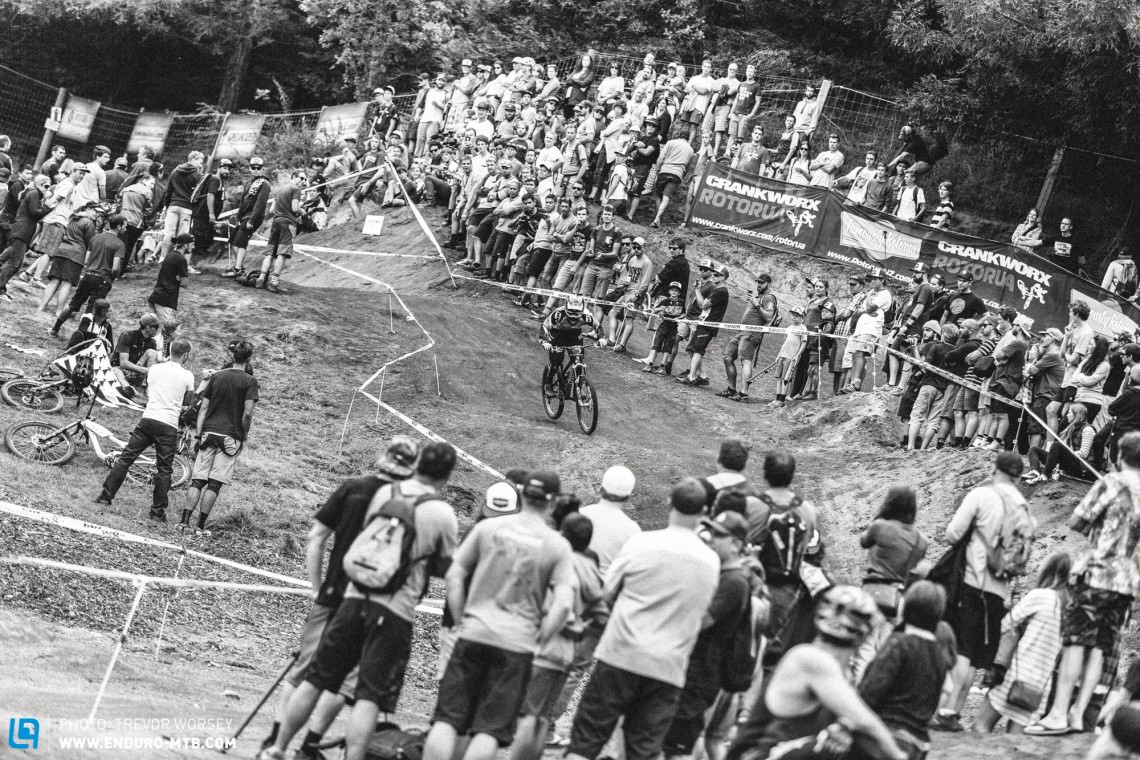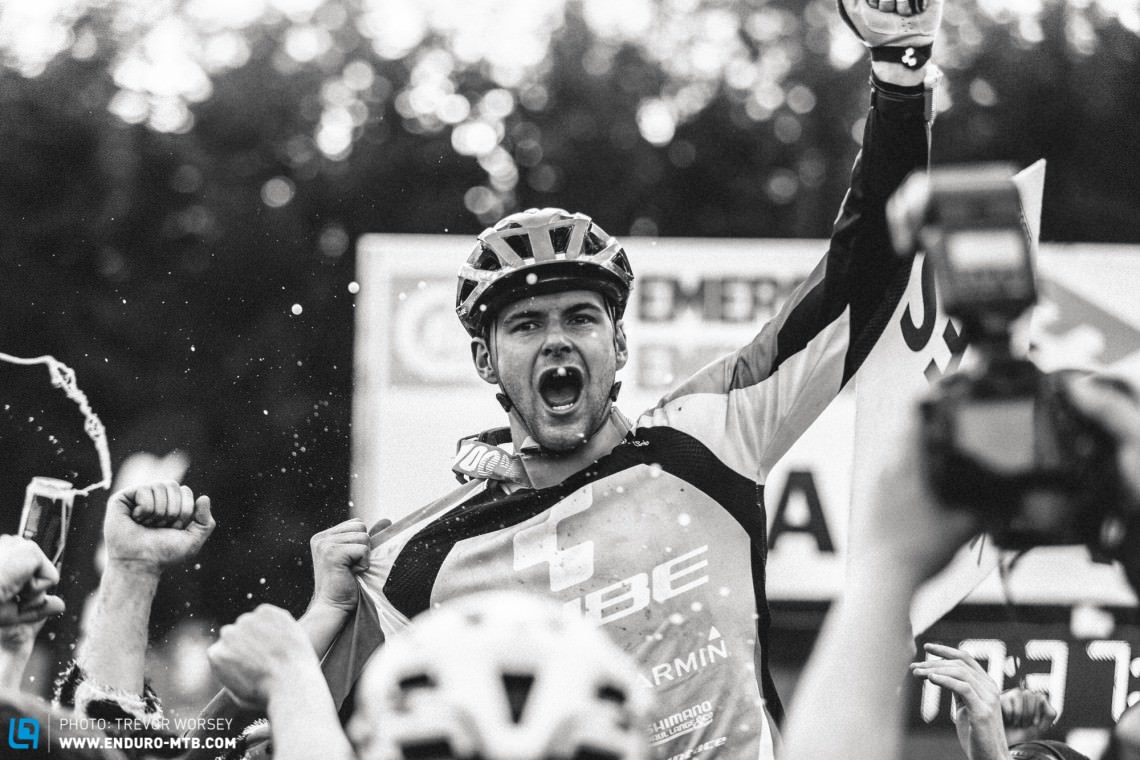Chris Ball is the definitive voice when it comes to international enduro racing, a man whose vision and foresight defined a successful international racing series and prompted a sporting movement.
When it comes to the direction international racing is taking then Chris Ball, Director of the Enduro World Series, is certainly the man at the helm. We first interviewed Chris three years ago when the EWS was just an idea; now Chris and the team have taken international racing to a new level, defining a sport and even a new racing culture.

From the beginning the Enduro World Series was forged on participation, allowing normal riders to ride with their racing heroes – but is that still the case? There are some who say that in order to push the elite, the EWS has grown detached from the expectations of the normal rider. We caught up with Chris Ball to find out more about the status quo, and where the future may lead.
ENDURO: Initially enduro racing as a sport was struggling for an identity, but I think it’s safe to say that the EWS has now defined it. Is it what you envisioned?
[emaillocker id=”127103″]Chris: Yeah, I guess it is. I remember the first time we met and you asked me what our aims were, and at the time our aim was simply to define the discipline. I think we have achieved that; where we have been amazed, though, is in the growth of interest in the sport. As to the question of whether the identity of enduro is what we imagined at the start, I think it is. The one thing that has taken a few people by surprise is the physical aspect. We have encountered questions about if it’s ‘fun’ enough, but when you put fifty of the world’s best riders on the start line it will be serious racing. However, I think we have hopefully retained the community part as much as possible.
We are trying to keep it mixed, which is why we get lovers and haters throughout the year, but as long as we have an equal amount of both we are fine.

ENDURO: The EWS team are certainly opinion leaders when it comes to the direction racing is taking; as an ex-DH rider with plenty of skills, do you think you are steering enduro more toward DH on small bikes?
Chris: Haha, that’s funny as a lot of people say I am pushing it too much physically. I don’t own a downhill bike, and haven’t for a number of years. I enjoy the physical aspect of riding and getting away from it all, accessing terrain that you could not do on a downhill bike. We have tried to include events in high alpine or southern alpine regions where the Superenduro and Tribe events all began, very much a high-mountain sport. There has always been a pressure when moving to areas like Scotland, Ireland, and parts of the States, where there is a more physical aspect, which I think is really important, but so much comes down to race balance. It is always a fun versus race strategy.
ENDURO: Since 2013 it’s arguable that races are getting longer, tougher, and more technically demanding. Do you think this is evolution of the athlete’s capabilities, bike design, or something else?
Chris: I think it’s a combination of a lot of things. We have heard a lot that we are trying make the sport harder and harder, but that’s not the case, nor has this ever been the motivation. For sure we have made mistakes sometimes where there has been an eagerness to ride the best trails around, resulting in too many stages in one event. The riders are now far more conditioned than they have ever been before; it has been fascinating watching the body types and physiology changing in both the men’s and women’s field. Look at some of the riders who came from downhill, and how different they look now. So it’s a combination of a lot of things: excitement from the course designers, conditioning of the riders, and the bikes are now just insane!

ENDURO: Do you think that low speed and technical should take the place of DH stages like those in NZ and stage 2 in the Tweed Valley?
Chris: I think we are learning a lot from the intensity of racing now, and the speed at which riders are capable of going. The New Zealand DH track was a mistake and it was too much – there was a fear that it was too much, which was proved correct. We are still young and trying to do so many different things, so we are still learning what fits.
ENDURO: We are starting to see enduro bikes shifting up again in travel to 180mm (the new Lyrik, etc.). Do you think that is good for the sport, pushing riders into bigger and faster terrain?
Chris: It’s a natural evolution for the industry, enduro racing aside. I think what we have done is push it to the forefront of development a lot quicker. I think the technology is opening up terrain that is not really rideable on a trail bike and not accessible on a DH bike, so there is that aspect to it, and the World Series has massively pushed the reliability and weight factor. The bikes are now light and strong, efficient and fast.
In terms of development though, we always aimed to develop with the industry, looking at the failures of four-cross or whatever. The healthy nature of the sport and the backing of the teams is because we are trying to race bikes that your or I may ride, which is the fundamental thing. Speaking to the RockShox guys recently, I asked them, “Where are you guys going with the Lyrik?”, so we could see how that fits with the EWS, but they turned it round and said, “We want to know where you guys are going so we can develop the technology.” Oh man, it’s amazing how quickly it has turned around. It’s all happening so fast.

ENDURO: With respect to danger, Crested Butte was a tragic and unavoidable accident, but we are seeing more and bigger injuries on the circuit, with the top ten shifting constantly because of injuries. Do you think we are getting to a point where the terrain is too challenging for the speeds the riders need to carry to remain competitive?
Chris: No. I say that because if I pull on some of my World Cup experience here, it’s quite common for the biggest injuries to occur on the easiest sections of trail. This is reflected across sport in general – the proportions of injuries on Green and Blue ski runs are higher than on Reds and Blacks. To say that “There are more injuries, so the trails are too difficult” is very easy, but also a more lazy way of thinking. The real thing going on is the intensity and volume of racing; the top racers are racing more in a season than a WC downhiller would race in ten years. Looking at the racing time from Whistler, the amount of time the top athletes spend against the clock is massive at this incredible intensity, and there is of course a likelihood of injuries. So there are a lot of things to think about, but I don’t think the technicality of the trails are one of them.
ENDURO: OK, we’re bringing it back to the positives. What was your high point from the 2015 series so far?
Chris: There have been so many positives, but I think Greg winning in Ireland was just a magical moment that gave that shudder of big sporting-event emotion. That’s pretty hard to beat, I think.

ENDURO: Yeah, it was epic. The Irish round really demonstrated how much spectators can influence a race – you should just scoop up a crew of Irish fans with a net and parachute them from an airplane around the other events!
Chris: Ha, yes, like Banana Paratroopers.
ENDURO: After two years dominated by the same handful of riders, this year we have seen drastic changes in the men’s top ten. Were you expecting that this year?
Chris: I have really enjoyed seeing how the top ten have been changing, seeing how many riders are in contention and how they handle the different events. The speeds have increased a little but the margins between the riders have decreased. I don’t think the riders are going any faster, but the margin for error has been reduced. The technology thing this year has been amazing; companies take a while to catch up, and we are seeing development from those first years.

ENDURO: You seem to have the global race scene on lock down, but what about national series too? Are you exploring any other projects?
Chris: It’s something we talk about a lot, and it’s something we need to do to create a much clearer filter into the EWS. The issue until now is that we have always been worried about biting off more than we can chew, so have watched the sport grow organically. We led from the front on the World Series, but how do the National Series fit in? In short, yes – as the sport grows it is something we will look at, but not before everyone is ready. Admittedly, we are far from that at the moment.
As the level of racing continues to professionalise and amateur racers are pushed further down the rankings, the Enduro World Series will soon face a very real problem. Enduro racing has always laid its foundations in participation, accessibility, and fun, but can this still be possible with such an elite-level field? We look forward to seeing what the 2016 season will bring.
[/emaillocker]For more infromation on the series visit the Enduro World Series website.
Words & Photos: Trevor Worsey
Did you enjoy this article? If so, we would be stoked if you decide to support us with a monthly contribution. By becoming a supporter of ENDURO, you will help secure a sustainable future for high-quality mountain bike journalism. Click here to learn more.









